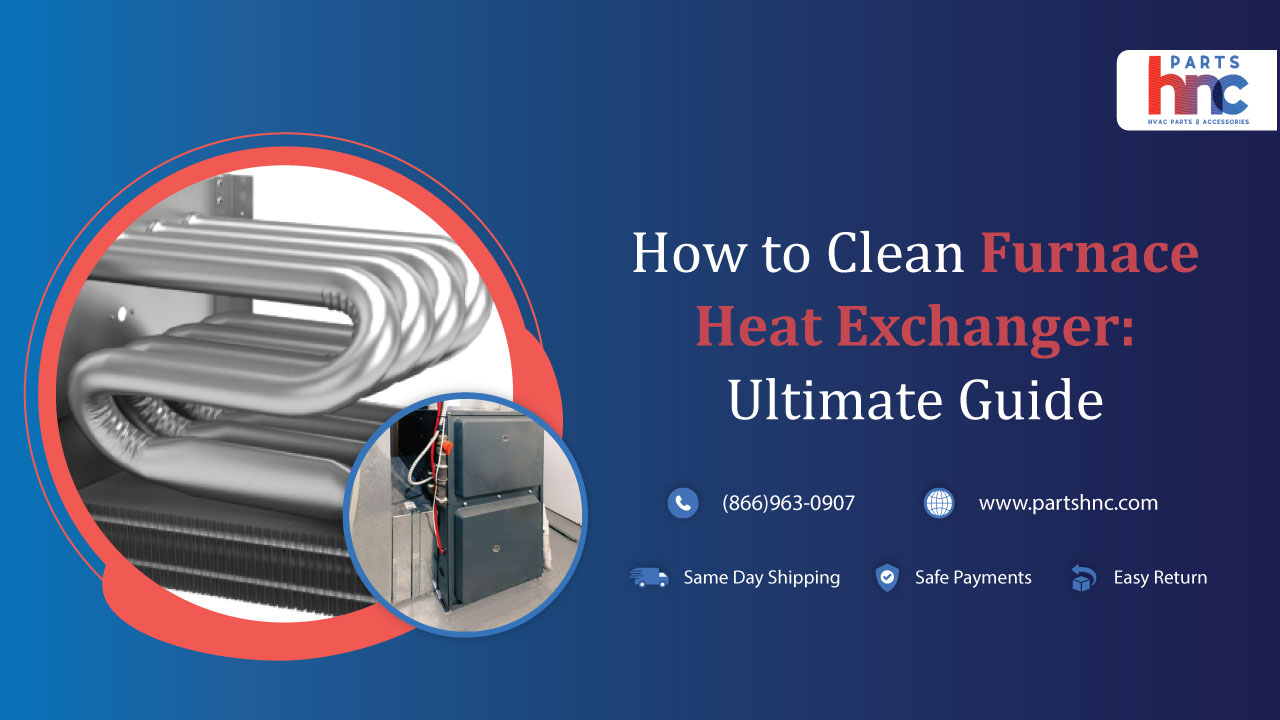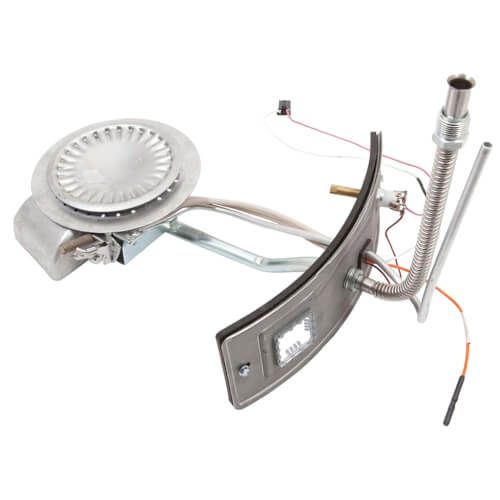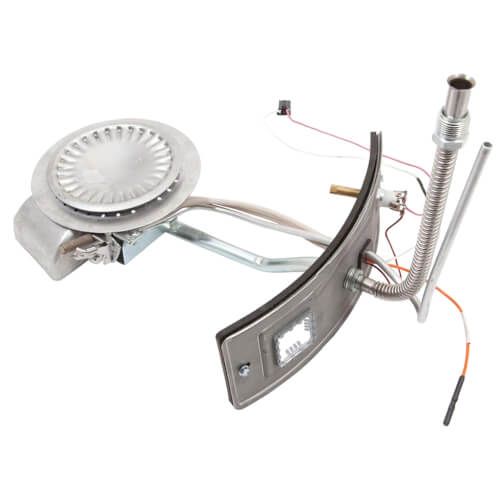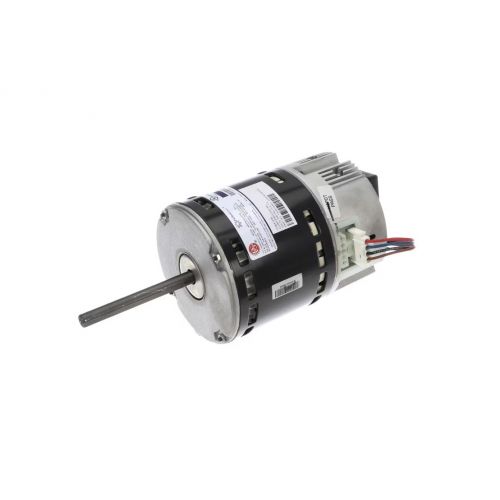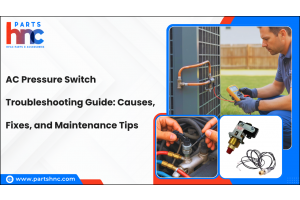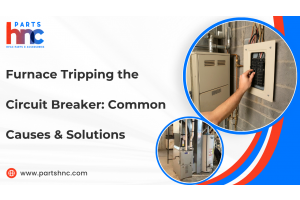Cleaning Furnace Heat Exchangers: Ultimate Guide
In the realm of home maintenance, ensuring the optimal performance of your furnace is paramount, and a key component in this process is the heat exchanger. Regular cleaning of the furnace heat exchanger not only enhances efficiency but also prolongs the system's lifespan. In this comprehensive guide, we'll walk you through the essential steps and best practices to effectively clean your furnace heat exchanger. From safety precautions to step-by-step heat exchanger cleaning instructions, this ultimate guide empowers homeowners to maintain a well-functioning, energy-efficient heating system. Regular heat exchanger cleaning is essential for maintaining peak performance and extending the lifespan of your heating system. A clean oil furnace heat exchanger ensures efficient heat transfer, promoting energy savings and reducing utility costs. Additionally, a well-maintained heat exchanger contributes to improved indoor air quality by preventing the buildup of combustion byproducts like carbon monoxide.
Table of Contents
Why Clean Your Furnace Heat Exchanger?
Regular heat exchanger cleaning is essential for maintaining peak performance and extending the lifespan of your heating system. A clean oil furnace heat exchanger ensures efficient heat transfer, promoting energy savings and reducing utility costs. Additionally, a well-maintained heat exchanger contributes to improved indoor air quality by preventing the buildup of combustion byproducts like carbon monoxide. By addressing potential clogs and blockages, you not only enhance the safety of your home but also optimize the overall functionality of your furnace. Invest the time in cleaning your furnace heat exchanger to enjoy reliable warmth, cost savings, and a healthier living environment.
Looking for Furnace parts? PartsHnC is your one-stop destination. We offer a wide range of parts for your furnace, such as a flame sensor, pilot light, thermocouple, etc at competitive pricing from trusted brands.
Signs Your Furnace Heat Exchanger Needs Cleaning
Identifying when your oil or gas furnace heat exchanger requires cleaning is crucial for ensuring the efficiency and safety of your heating system. Signs Your Furnace Heat Exchanger Needs Cleaning:
- Reduced Heating Efficiency: Notice a decline in your furnace's ability to heat your home effectively.
- Unusual Odors: Detect strange smells during furnace operation, which may indicate combustion byproducts are accumulating.
- Uneven Heating: Experience inconsistent warmth throughout your home, suggesting possible heat exchanger issues.
- Increased Energy Bills: Witness a spike in utility costs, a sign of decreased efficiency, and potential heat exchanger blockages.
- Soot Buildup: Visible soot on the heat exchanger or in the combustion chamber is a clear indication of needed cleaning.
- Carbon Monoxide Detectors Activate: Continuous alerts from carbon monoxide detectors signal a potential heat exchanger problem, requiring prompt attention.
- Visual Inspection: Conduct regular inspections for rust, corrosion, or debris on the heat exchanger surface. The presence of rust in furnace heat exchanger can compromise its integrity, leading to reduced efficiency and potential safety hazards in the heating system.
Addressing these signs promptly through regular cleaning ensures optimal furnace performance and a safer, more efficient home heating system.
Safety Precautions Before Cleaning Furnace Heat Exchanger
The heat exchanger is a vital HVAC parts in furnaces, facilitating efficient heat transfer for optimal heating system performance. Cleaning it is an essential maintenance task that ensures optimal performance and efficiency. However, before you begin the cleaning process, it's crucial to prioritize safety. Follow these precautions to safeguard yourself and your surroundings before you clean furnace heat exchanger:
Turn Off the Furnace: Before starting any cleaning procedure, turn off the furnace and disconnect it from the power source. This step is fundamental to prevent any accidental activation of the system during maintenance.
Allow Cooling Time: Give the furnace sufficient time to cool down. A hot furnace poses burn risks, so ensure that it has cooled to a safe temperature before initiating any cleaning activities.
Wear Protective Gear: Always wear appropriate protective gear, including gloves and safety glasses, to shield yourself from potential debris, dust, or sharp edges within the furnace.
Ventilation is Key: Work in a well-ventilated area to avoid inhaling any fumes or particles that may be released during the cleaning process. Open windows and doors to improve air circulation.
Use Caution with Cleaning Products: If you plan to use cleaning agents, make sure they are suitable for furnace components. Follow the manufacturer's guidelines and use the products in a well-ventilated space.
Check for Gas Leaks: If your furnace is gas-powered, perform a quick check for gas leaks before starting the cleaning process. If you detect any gas odors, immediately evacuate the area and contact a professional.
Inspect Electrical Components: Ensure that there are no exposed or damaged electrical components. If you notice any issues, consult a qualified technician before proceeding with the cleaning.
Read the Manual: Always refer to the manufacturer's manual for specific safety guidelines and instructions related to your furnace model. Following the manufacturer's recommendations is crucial to maintaining a safe environment.
Tools and Materials Needed
Before you embark on cleaning your gas or oil furnace heat exchanger, gather the necessary tools and materials to ensure a smooth and efficient process. Here's a list of items you may need:
-
- Screwdriver
- Soft-bristle brush
- Vacuum cleaner with attachments
- Duct tape
- Disposable rags or towels
- Mild cleaning solution (if recommended by the manufacturer)
- Safety glasses
- Gloves
- Dust mask
- Flashlight (for better visibility in tight spaces)
Having these tools and materials at your disposal will help streamline the cleaning process and contribute to maintaining the longevity and efficiency of your furnace heat exchanger.
Step-by-Step Guide to Cleaning Your Furnace Heat Exchanger
Your furnace's heat exchanger plays a crucial role in the heating process of your home. Over time, it can accumulate dirt, dust, and other debris, reducing its efficiency and potentially causing malfunctions. Regular cleaning of the heat exchanger is essential to ensure your furnace operates efficiently and safely. This step-by-step guide will show you how to clean your furnace heat exchanger:
Step 1: Safety First: Before you begin, ensure your furnace is turned off and has cooled down completely. Disconnect the power supply to avoid any accidents. Additionally, wear protective gear, including gloves and safety glasses, to shield yourself from dirt and dust.
Step 2: Locate the Heat Exchanger: Familiarize yourself with the furnace components and locate the heat exchanger. It is typically a metal component with a network of tubes or coils. Refer to your furnace's manual if you're unsure about its location.
Step 3: Remove the Panels: Most furnaces have access panels covering the heat exchanger. Use a screwdriver to remove these panels carefully. Place the screws in a secure location to avoid misplacement.
Step 4: Inspect the Heat Exchanger: Once the panels are removed, visually inspect the heat exchanger for any visible signs of damage, such as cracks or corrosion. If you notice any issues, it's crucial to consult a professional technician for further evaluation and repairs.
Step 5: Use a Soft Brush to Remove Loose Debris: Gently brush the surface of the heat exchanger with a soft brush to remove loose dirt and debris. Be thorough but cautious not to damage the fins or tubes. Effective heat exchanger tube cleaning is essential to maintain optimal performance and energy efficiency in industrial heating systems. This initial brushing helps prepare the heat exchanger for a more detailed cleaning.
Step 6: Vacuum the Heat Exchanger: Use a vacuum cleaner with a nozzle attachment to carefully remove the remaining dirt and debris. Pay close attention to the hard-to-reach areas, ensuring a comprehensive cleaning process. A vacuum with a HEPA filter is recommended to capture fine particles effectively.
Step 7: Wipe Down with a Damp Cloth: Moisten a cloth with a mild cleaning solution and wipe down the heat exchanger's surface. This helps remove any stubborn dirt and ensures a thorough cleaning. Avoid using harsh chemicals that may damage the metal.
Step 8: Reassemble the Furnace: Once the heat exchanger is clean and dry, reattach the access panels securely. Double-check that all screws are tightened, ensuring the panels are in place. Reconnect the power supply and turn on the furnace to test its functionality.
Common Mistakes to Avoid Cleaning Furnace Heat Exchanger
Here are the common mistakes to avoid when cleaning an oil or gas furnace heat exchanger:
Mistake 1: Neglecting Regular Cleaning: One common mistake is neglecting regular cleaning of the furnace heat exchanger. Over time, the accumulation of debris can lead to decreased efficiency and increased energy consumption. Regular heat exchanger maintenance is crucial to ensure the efficiency and longevity of your heating system.
Mistake 2: Using Abrasive Cleaning Agents: Avoid using abrasive or corrosive cleaning agents on the heat exchanger. These substances can damage the metal surface, reducing its lifespan and potentially causing malfunctions.
Mistake 3: Skipping Professional Inspection: While regular cleaning is essential, it's equally important to schedule professional inspections. Technicians can identify issues that may not be visible during a DIY cleaning and ensure your furnace operates safely and efficiently.
Mistake 4: Ignoring Visible Damage: If you notice visible damage, such as cracks or corrosion, do not attempt to repair it yourself. Continuing to use a damaged heat exchanger can pose serious safety risks. Consult a professional technician for a thorough evaluation and necessary repairs.
Mistake 5: Forgetting to Turn Off the Furnace: Always turn off the furnace and disconnect the power supply before attempting to clean the heat exchanger. Failing to do so can result in accidents and injuries. Safety should be a top priority throughout the cleaning process.
Benefits of Regular Furnace Heat Exchanger Cleaning
Regular furnace heat exchanger cleaning offers numerous benefits for your heating system's efficiency and longevity. Firstly, it enhances energy efficiency by removing accumulated dirt and debris, allowing the heat exchanger to transfer heat more effectively. This results in lower energy consumption and reduced utility bills. Additionally, clean heat exchangers improve indoor air quality by preventing the circulation of pollutants and allergens. A well-maintained heat exchanger also reduces the risk of system malfunctions, leading to fewer repairs and increased lifespan. By investing in routine cleaning, homeowners ensure a safer, more cost-effective, and reliable heating system, ultimately promoting comfort and peace of mind during colder months.
Top Furnace Heat Exchanger Brands
When it comes to heating systems, the efficiency of a furnace heat exchanger plays a crucial role. Several top-notch brands have emerged as leaders in crafting reliable and high-performance heat exchangers. Among them, industry giants like Carrier, Trane, and Lennox are recognized for their cutting-edge technology and durable products. These brands prioritize safety and energy efficiency, ensuring optimal heat transfer within the furnace. Homeowners seeking reliable heating solutions can trust these top furnace heat exchanger brands for superior performance and longevity. Maintaining a clean furnace heat exchanger is essential for optimal heating system performance. Regular cleaning, as outlined in the ultimate guide, ensures efficiency, safety, and longevity. By following the recommended steps, homeowners can enjoy a well-functioning furnace, lower energy costs, and peace of mind throughout the heating season.
FAQs
What can I use to clean my heat exchanger?
Use a non-abrasive brush and a mild detergent to clean your heat exchanger.
How do I know if my heat exchanger is clogged?
Check for reduced airflow, unusual odors, or visual inspection are the signs of clogged heat exchangers.
Do heat exchangers need maintenance?
Yes, regular heat exchanger maintenance, including cleaning, is crucial for optimal performance and longevity.
How do you clean a heat exchanger without removing it?
Employ a specialized foaming heat exchanger cleaner and follow manufacturer guidelines to clean a heat exchanger without removal.
What is the temperature of a furnace heat exchanger?
Furnace heat exchanger temperatures typically range from 120°F to 200°F during operation.


